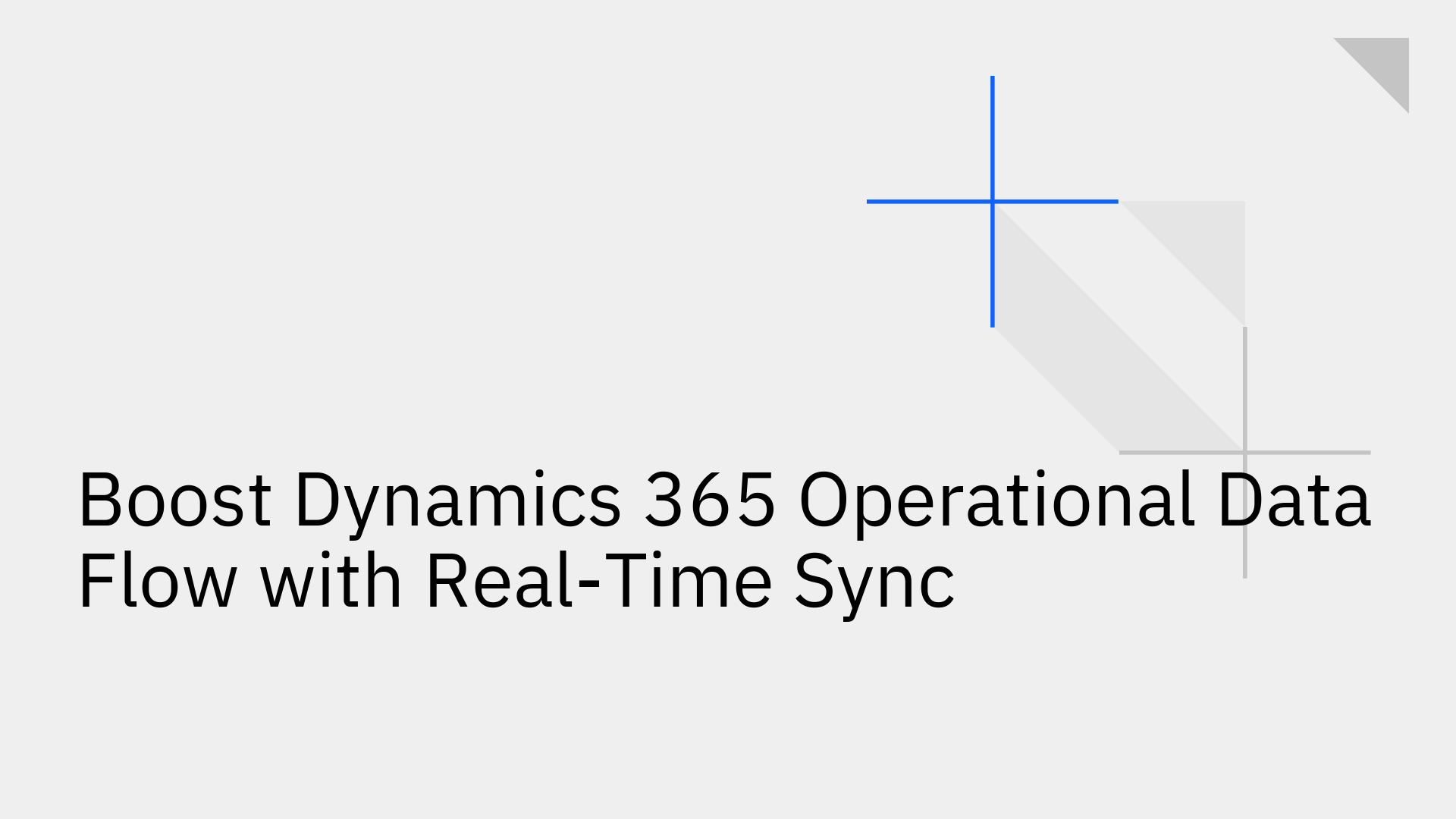
Microsoft Dynamics 365 is the operational backbone for countless businesses, managing everything from finance and supply chain to customer service. However, its power is often capped when data becomes isolated. Delays and silos between Dynamics 365 and other critical applications like CRMs, custom databases, and e-commerce platforms create operational friction, leading to process inefficiencies, decisions based on stale data, and a fragmented customer experience.
The solution is not merely moving data, but enabling a truly connected ecosystem. Real-time synchronization transforms the Dynamics 365 operational data flow from a series of disjointed updates into a seamless, instantaneous conversation between systems, establishing a single source of truth that empowers the entire business.
Many organizations rely on built-in or traditional methods to move data in and out of Dynamics 365, but these approaches have inherent limitations. While native tools like Power Platform Dataflows are useful for scheduled data migration and transformation, they are designed for batch processing, not for the instantaneous synchronization modern operations demand [3]. This approach introduces several critical challenges:
Real-time, two-way synchronization is the process of instantly and automatically updating data between two or more systems the moment a change occurs in any connected system. Unlike scheduled jobs, it creates a persistent, living connection that ensures all systems are perpetually aligned.
For operational workflows, the benefits are transformative:
While Dynamics 365 offers "Business Events," they only signal that a change has occurred; organizations must still build and manage the complex infrastructure to process that data [8]. A complete solution requires an architecture built for this purpose, which is where Stacksync’s real-time sync features deliver.
Stacksync is a data integration platform purpose-built to deliver true real-time, bidirectional synchronization for enterprise applications like Dynamics 365. Instead of relying on periodic batch jobs, our platform establishes a persistent connection that moves data at business speed. Our dedicated Microsoft Dynamics 365 two-way sync integration eliminates the technical overhead and operational latency of traditional methods.
[Salesforce] <---> [Stacksync Engine] <---> [Dynamics 365] [PostgresDB] <---> [Stacksync Engine] <---> [Dynamics 365]
For mission-critical operations, speed is non-negotiable. Stacksync syncs data in milliseconds, ensuring your Dynamics 365 operational data flow keeps pace with your business. Our true bidirectional engine means a change made anywhere is reflected everywhere, instantly. Whether a record is updated in Dynamics 365 or a connected database like DynamoDB, the change propagates across all systems. This is especially powerful when you need to sync DynamoDB and Microsoft Dynamics 365, bridging the gap between operational applications and flexible backend services.
A real-time solution is only as good as its reliability. Stacksync is engineered to handle massive data volumes with enterprise-grade resilience.
Key reliability features include:
Real-time sync is the foundation for powerful automation. Once data flows instantly, you can trigger automated actions based on any data change. For example, when an invoice is marked "Paid" in Dynamics 365, a trigger can automatically update the customer's status in the CRM and notify the account manager. You can build these real-time operational workflows to automate virtually any cross-departmental process.
Stop letting slow, unreliable batch jobs dictate the pace of your business. Unlock true operational efficiency by creating a unified, real-time data flow centered around Dynamics 365. Stacksync provides a scalable, reliable, and easy-to-implement solution that empowers your teams with the live data they need.
Ready to supercharge your Dynamics 365 data flow?